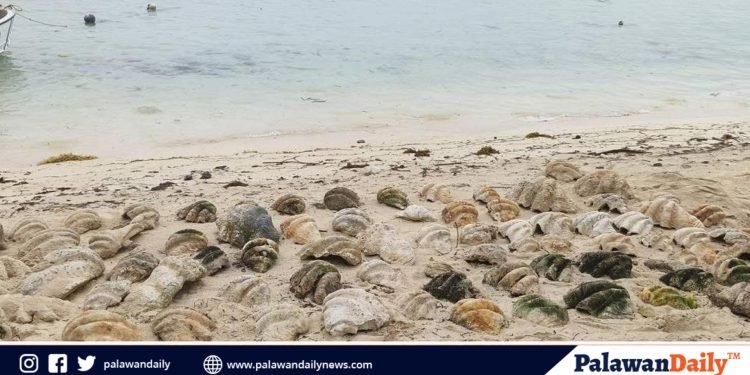Along the quiet shoreline of Barangay Melville in Balabac, a joint law enforcement team spent hours digging through sand that concealed more than a decade of silence.
By the end of the operation, they had unearthed 182 giant clam shells, once-living marine giants, now brittle reminders of an illicit trade that continues to haunt Palawan’s coasts.
On August 20, personnel from the Coast Guard Station South Western Palawan (CGSSWP), the Coast Guard Intelligence Unit in Balabac, the Palawan Council for Sustainable Development Staff (PCSDS) Enforcement Team, and the Philippine National Police Maritime Group uncovered the buried shells near homes in the barangay. Some were half-exposed, others completely hidden beneath sand.
“After approximately two hours, the operation was completed, resulting in the collection of a total of 182 clam shells,” authorities reported.
The shells were formally turned over to PCSDS through Wildlife Enforcement Officer Jonathan B. Montalba, who then coordinated with a local barangay official for temporary custody pending a scheduled hearing before the PCSD.
According to Montalba, the condition of the clams suggested they had been buried for roughly 11 years.
“The dry giant clams had been buried for approximately eleven years, as indicated by their texture and coloration,” he said. The largest measured 76.2 centimeters across, once capable of sheltering an entire reef of marine organisms.
The discovery also reveals a long-standing tension in Palawan between conservation laws protecting taklobo (giant clams) and the lucrative underground trade that transforms them into furniture, statues, or decorative ornaments.
“Dry giant clam shells are being sold at around Php 500.00 per kilo,” Montalba reported, acknowledging the financial lure behind the exploitation.
Giant clams are keystone species, filter feeders that maintain water clarity and provide refuge to smaller fish, their massive shells forming microhabitats on fragile reefs. Their loss, experts say, is a loss for the ecosystem as a whole.
While the 182 shells recovered in Balabac may never return to the sea, authorities hope the case will reinforce the need for vigilance.























